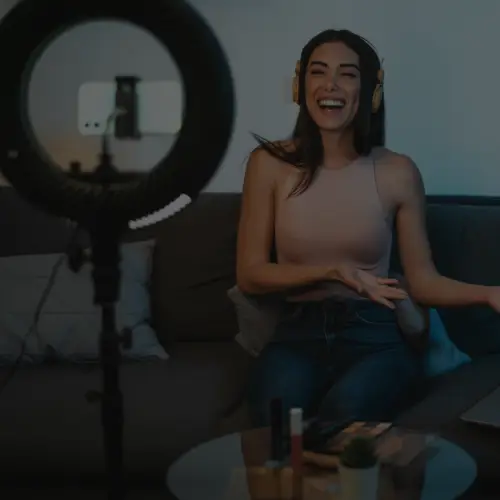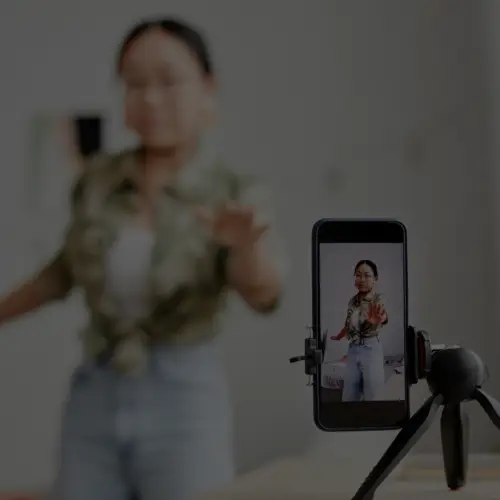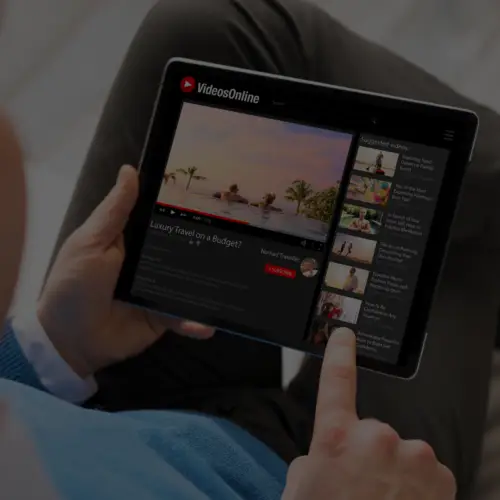07 Mar Facebook News Feed Redesign Might Mean Big Changes For Your Brand’s Content Strategy
Facebook announced today that major changes will be rolling out to users’ News Feeds and our initial reaction is that these changes will have some significant implications for brands in the way they approach content creation on the network.
The net takeaway (if you don’t want to read about the changes in detail):
Engaging, multi-media content that drives social actions is becoming even more important. Brands that use Facebook as just another channel to broadcast their traditional marketing messages will find themselves quickly falling behind and needing to spend more and more ad dollars to reach users on the network.
But seriously, these changes are kind of a big deal, so read on. I promise it will be worth your time.
Why Is the News Feed Changing…AGAIN?!
Facebook took us all the way back to 2007 to remind us that the goal of News Feed has always been to provide the best, personalized newspaper for their users. To do that, people have to be able to contribute to this newspaper with any type of content they want. They need to be able to customize content for the audience they want to see it (friends, public, co-workers, etc.).
So the changes announced today are a reaction to the way Facebook users want to share and consume content. Photo sharing, for example, has increased tremendously in the last 5 years, making up roughly 50% of all content shared through the News Feed. They also found that users want to see updates from friends, businesses, and publications, but they want to consume each of those types of content differently.
So what’s changed? And what does that mean for your brand’s community strategy?
News Feeds Optimized For Content Types
Since the way people consume content differs based on the type of content it is, Facebook has revamped the way content is displayed within the feed. These changes and some initial thoughts on implications for brands are described below.
Serving Up Top-shared Content Related to Things you Like
This is potentially the most important change for brands to note because it’s a huge opportunity to serve relevant content to people who do not Like your brand. However, making any type of significant impact will require an integrated approach across multiple marketing disciplines.
Top-shared content stories will serve up groups of articles that Facebook deems relevant to each user based on their Likes and social actions. The articles that get served up will be those that are most shared by other users on the network. As Facebook tells it, this is a way to help users discover new content that might be of interest to them without only relying on their friends or leaving the network.

For brands, getting people to share owned and third-party content to Facebook could put your brand in front of people you wouldn’t normally reach without ad dollars. Just don’t fragment your efforts because the volume of shares around each piece of content needs to be significant in order to leverage this opportunity.
Elements of Brand Page Timelines Pulled Into Like Stories
When someone Likes your page and a story is created around that Like in their friends’ News Feeds, those friends will see a preview of your brand’s timeline. We’re not clear at this time if this only goes for Sponsored stories or if this branding applies to non-paid Like stories. If it applies to organic actions, this means driving Likes through engaging content could give your brand greater prominence in the feed, hopefully spurring even more organic growth. It also means you need to make sure your timeline is optimized visually to pull in potential fans. Facebook has been warning against using campaign imagery or text in the cover photo and instead focusing on evergreen, brand imagery. Given your cover photo will now be a prominent visual in Like stories, this might mean changes to the way your brand produces cover photos.

More Information about Places You Check Into
This change is especially relevant to brands with locations users might check into. Make sure that those local pages are optimized because when people check in, you’ll have the opportunity to display even more information in their friends’ News Feeds.

Better Article Summaries on Shared Links
Currently, shared links pull in content including a thumbnail as well as an editable title and description when users share links to web properties. Those thumbnails, titles and descriptions have historically been populated by the meta data Facebook can scrape from your website. Given these items are going to have more prominence, brands should make sure that meta data is optimized for Facebook sharing in a way that will draw News Feed readers to click through to their site. This is an opportunity for brands, if done correctly, to potentially see even more referral traffic from the network.

Rich Visuals to Better Reflect Activity on Third Party Sites like Pinterest
Stories produced when third party sites like Pinterest automatically share your activity to Facebook are getting more love too. In the Pinterest example below, you can see the size of the shared content is increased.

Why should brands on Facebook care? Because getting users to share your content on sites like Pinterest is just one more way to show up in their friends’ feeds, putting your Pinterest content in front of people who may not follow you.
Larger Photos & Albums
As Facebook said it, a picture should be worth 1,000 words, but the current design only shows photos worth 500 words. So, the revamped photo view in News Feed will make quality photo content even more important given the revamped size.

Photo albums are also getting larger, meaning it’s going to become even more important for brands to produce and optimize visual content for Facebook.
Multiple News Feeds
This isn’t exactly a new concept for Facebook since users can currently see different versions of their News Feed, but as Facebook tells it, these changes are giving people more choice and more control over stories in their feeds.
Yes, you should be freaking out right now. That means that brand content could potentially be de-prioritized. But it’s also possible this won’t change things in the default News Feed. Facebook wasn’t clear about that, but I can’t imagine they’d pull brands out of the default News Feed completely. They have a lot of loyal advertisers that they need to play nice with. The real worry for brands should be the scale of Facebook users who opt to engage with feeds free of brand content. (So, once again, quality content that appeals to your fans and gets them to take social actions on the platform regularly is crucial.)
It also means that some Facebook tools that brands often ignored, such as Events, are going to provide a significant opportunity for certain types of pages.


Topical Feeds
With the new News Feed(s), people can now control what they want to see by jumping to topical sections much like you would an online newspaper.
In the Music feed example, you’ll see that Justin Timberlake’s camp could use Facebook events to list all his upcoming tour dates. If I’ve Liked JT on Facebook, his upcoming show in Raleigh, NC, would show up in my Music feed. If I have friends that have RSVP’d, I’ll be even more likely to see that event.
Differentiating a “Friends” and a “Following” Feed
By clicking into the Friends feed, users will see all posts from their friends but nothing from brands, apps, games, etc. But, by clicking into the Following feed, users will be able to see all content served up by the brands they’ve Liked or celebrities they’ve followed.
In both cases, users will see everything based on recency. This means a potential for more brand reach, but it also means users might decide never to look at branded content leading to a decrease in reach. So once again, engaging content that drives social actions to get your brand in front of users in multiple feeds is key. Brands that use Facebook as just another channel to broadcast their messages will find themselves quickly falling behind and needing to spend more and more ad dollars to reach users on the network.
If users really do start reading their “Following” feeds though, brands may want to consider increasing their posting frequency and paying real close attention to optimizing their post times because these feeds will function more like Twitter. Users will see a complete stream of all content from pages they’re following in chronological order. If you have fans who also follow a lot of other brands, that means your content could be off the page in a matter of minutes.
Feed Order Sorted by How Often You Use Them
If a user checks out their Music feed every day, that one will move to the top of list. If the user rarely checks their Following feed, then to the bottom of the list it will go. One more change that means brands will need to focus on getting their content in as many of these feeds as possible. Seriously guys, no more PR headlines as Facebook updates. It’s not going to work.
Mobile-inspired UI
The final update won’t have as much of an impact on brands but does support what data has been telling us for a while – users are accessing the feed more and more from mobile and tablet browsers. So the web version of the Facebook News Feed is being transformed to mirror the experiences we’re already seeing on smaller devices.

– The current web-based News Feed takes up a little less than 40% of the screen, but users say it is most important thing to them and that the rest is just clutter.
– Facebook expects users to view different feeds on different devices because they use different devices based on the type of content they’re looking to consume.
- The applauded “new stories” alert that’s been on mobile for a while now will find it’s way to the web-based version of News Feed.
Quick! Start Changing Your Strategy!
Just kidding. You don’t have to turn your Facebook strategy on it’s head today. Whew!
Facebook says they plan to roll out these changes on a limited opt-in basis over a long period of time so they can collect feedback and optimize it as they go.
But, if you haven’t been already, you should definitely start prioritizing engaging content and utilizing Facebook tools relevant to your brand (think Events for musicians). You should also make sure your brand’s timeline is visually appealing, and consider strategies that drive your audience to take social actions like sharing articles or videos about your brand to their own timelines.
For more light reading on this topic, you can check out some of the obvious news sources like Mashable, Huffington Post or Gizmodo. Or, just head on over to Facebook’s official new News Feed page to get your name on the list for early access to the redesign.
So what do you think? How are brands going to be affected by Facebook’s News Feed overhaul?






